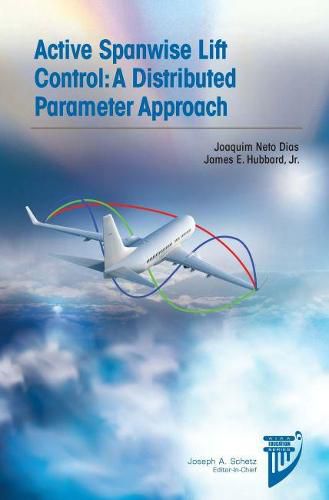Active Spanwise Lift Control: A Distributed Parameter Approach
Joaquim Neto Dias,James E. Hubbard Jr.

Active Spanwise Lift Control: A Distributed Parameter Approach
Joaquim Neto Dias,James E. Hubbard Jr.
Active Spanwise Lift Control presents a novel approach to tackle the gust alleviation problem. Traditional approaches typically attempt to suppress the structural response at discrete points of the wing using only the conventional control surfaces (aileron, elevator, rudder), resulting in limited control authority, high-bandwidth actuator requirements, and necessity of gust field measurements ahead of the aircraft. In this book, the authors directly address the spanwise behavior of aerodynamic loads, as this is what should be primarily controlled. Because the gust loads are mainly caused by disturbances in the spanwise lift, the aim is at controlling the shape of the lift distribution profile along the span. Therefore, this distributed approach allows control of the loads at all points of the wing structure. Moreover, using modal decomposition concepts, the control surfaces can be designed to maximize controllability of the most relevant aerodynamic modes, which naturally results in lower actuator rate requirements.
In the work herein, the unsteady aerodynamics of a finite wing featuring multiple trailing edge flaps is modeled using the Unsteady Vortex Lattice Method (UVLM), yielding a linear, time-invariant, high-order state-space model. An Eigensystem Realization Algorithm (ERA) is applied for model-order reduction and modal identification, providing aerodynamic mode shapes and associated eigenvalues. By representing the system output (lift distribution) as a truncated superposition of aerodynamic mode shapes, a low-order MIMO modal representation is obtained, suitable for controller synthesis. This methodology is used to synthesize regulators, to suppress gust disturbances in lift distribution, and trackers, to dynamically follow any desired reference lift profile. A special observer structure decouples the gust input from the state estimation process and provides estimates for the gust amplitude along time, thus rendering the gust measurements ahead of the aircraft unnecessary.
This item is not currently in-stock. It can be ordered online and is expected to ship in approx 2 weeks
Our stock data is updated periodically, and availability may change throughout the day for in-demand items. Please call the relevant shop for the most current stock information. Prices are subject to change without notice.
Sign in or become a Readings Member to add this title to a wishlist.


